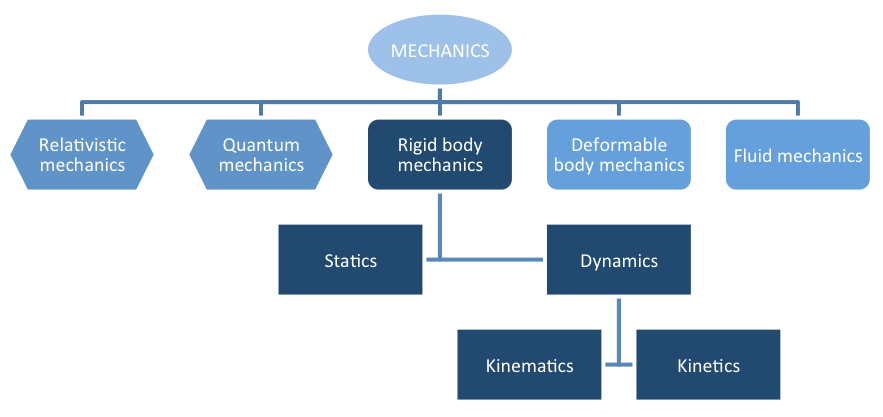Introduction
Definition of Mechanics

Knowledge of mechanics is essential for studying biomechanics.
Mechanics is concerned with the analysis of the action of forces on objects.
Objects of interest in sport biomechanics are human body and sport equipment. According to the nature of studied objects mechanics is divided into several branches (Fig. 1).
Figure 1 Branches of mechanics divided according to the nature of studied objects, and the division of rigid body mechanics.

In rigid body mechanics we presume that all objects are perfectly rigid. This means they change neither their form nor their volume when forces act on them. It simplifies the following mechanical analysis. Parts of human body are of course not perfectly rigid. Deformations would often make the analysis of motion too complicated. Fluid mechanics is concerned with mechanics of gases and liquids. Relativistic mechanics is related to the Einstein relativity theory and quantum mechanics describes behaviour of objects on atomic and subatomic level. In biomechanics we mostly make use of rigid body mechanics which is best applicable for describing the motion of human body and its parts. Since certain sport events take place in fluid environment, biomechanics also uses knowledge of fluid mechanics. Repeated little deformations of human body may cause injuries, therefore we will also partly inquire into mechanical deformation of human body and its parts.
According to specific approach to the study of objects motion and their equilibrium, mechanics is divided into statics and dynamics. Statics studies objects that are either at rest, or in constant motion, that is a motion with constant velocity as to its magnitude and direction. Dynamics studies objects with acceleration. Dynamics is divided into kinematics and kinetics. Kinematics describes the motion of objects, while kinetics studies forces that cause changes of motion.